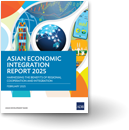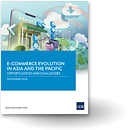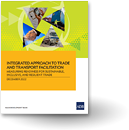The future of the WTO: Balancing Bali with the ITA
Now that the gavel has come down in Bali, WTO negotiators and DG Azevedo deserve a round of applause for accomplishing a herculean task – generating consensus among 160 different member states. The need for a new process has been acknowledged many times, and this was underscored again at the Bali Ministerial which threatened to derail until the last day.
One solution that has been floated is a return to the plurilateral system used in the GATT. This has some merit. It would allow countries to choose their commitments based on their own assessment of their capacity to implement them.
But recent events raise a red flag. The November 21st breakdown of efforts to expand the information technology agreement (ITA) in combination with the early hard line position taken by India during the Bali Ministerial suggest that any enduring solution to multilateral deadlock will need to take a hard look at dependence on exceptional treatment.
1. ITA negotiations: Extensive sensitive lists lead to collapse
In 1996, the ITA was concluded among 14 parties. It was unique in its stipulation that the agreement would only come into force when participants representing 90% of world IT products had acceded to its terms. Today, there are 51 members (see figure 1) which account for 97% of world IT trade.
Figure 1: Signatories with date of accession
|
1996 (original signatories) |
1997-1999 |
2000-2005 |
2006-2013 |
|
Australia Canada EC Hong Kong, China Iceland Indonesia Japan Norway Republic of Korea Singapore Switzerland Taipei,China Turkey United States |
Albania (1999) Bulgaria (1998) Costa Rica (1997) Croatia (1999) Cyprus (1998) Czech Republic (1997) El Salvador (1997) Estonia (1997) Georgia (1999) India (1997) Israel (1997) Jordan (1999) Kyrgyz Republic (1999) Latvia (1998) Lithuania (1999) Macao, China (1997) Malaysia (1997) Mauritius (1999) New Zealand (1997) Panama (1998) Philippines (1997) Poland (1997) Romania (1997) Slovak Republic (1997) Slovenia (1998) Thailand (1997) |
Bahrain (2003) Egypt (2003) Guatemala (2005) Honduras (2005) Hungary (2004) Kingdom of Saudi Arabia (2005) Malta (2004) Moldova (2001) Morocco (2003) Nicaragua (2005) Oman (2000) People’s Republic of China (2003) Vietnam (2006)
|
Colombia (2012) Dominican Republic (2008) Kuwait (2010) Montenegro (2012) Peru (2008) Russia (2013) Tajikistan (2012) Ukraine (2008) United Arab Emirates (2007)
|
Source: World Trade Organization
Note: EC countries are counted as one party.
Signatories agreed from the beginning that expansion of the original products list is critical in a sector where innovation occurs quickly. Uncovered items include products that are ubiquitous today such as GPS systems and flat screen TVs.
The first review of the covered list was in October 1997, but substantial progress was not made until the most recent round of discussions began in May 2012. Negotiators identified 256 IT products that might be included in an expanded ITA.
However two problems quickly arose. First, only 25 out of 51 signatories are participating in expansion negotiations. India, for example, is not a participant.
Second, some countries, such as the People’s Republic of China (PRC), submitted relatively long lists of exempted or sensitive products. By November, negotiators had only managed to reduce the PRC’s initial list of 140 items to around 50. And the removed items were only moved to a sensitive list which would allow 10-15 years to phase out tariffs. This ultimately led to the breakdown of the process last month.
2. The Bali Ministerial: acknowledging problems faced by developing countries
The WTO has long recognized that many developing countries face difficulties in accessing the potential benefits offered by multilateral trade rules. The Doha Round was devoted to finding solutions to these issues. The Bali Package is a considerably reduced form from the original negotiating topics (including only trade facilitation, agriculture, cotton and LDC issues).
While none of the four issues offered much in the way of substantial innovation on existing commitments, the trade facilitation text is a creative departure from the usual exemptions that have driven developing country participation in the WTO. Unlike the ITA, it is binding on all WTO members and includes assistance commitments.
The issue of stockholding for food security required the most difficult compromises. An interim solution was reached, whereby members agree to exercise “due restraint” on developing countries that exceed their Amber Box limits. The highly political nature of the compromise reminds us that special treatment is not sufficient to solve more fundamental problems with the impact of certain features of the WTO on developing countries.
3. Implications for the future of trade negotiations
The failure of the ITA expansion and the nature of the Bali Package agreement have three implications for the future of the WTO negotiating process overall.
First, demonstration effects matter. The ITA’s early success in attracting signatories created momentum to revisit the product list. The Bali agreement acknowledged the importance of not failing again to enable future negotiations. When momentum matters, plurilaterals are a useful tool to make quick gains.
Second, sensitive lists, exceptions lists and special treatment must no longer be seen as a tool to move forward. The ITA failure illustrated the danger of dependence on exceptions. The trade facilitation agreement agreed to in Bali offers a creative mechanism – it recognizes the limitations of implementation capacity and sets out assistance guidelines and transparency mechanisms (Section II(9&10)).
Finally, estimates of potential trade outcomes of both Bali and the ITA remind us that better trade rules can have substantial benefits. For the ITA, it has been estimated that expanding the product coverage would have increased trade in global IT products by 20%. In Bali, the Peterson Institute has suggested that the trade facilitation deal alone could boost world exports by nearly 1 trillion dollars and create 21 million new jobs.
Plurilaterals could maintain the momentum of Bali, but we need to acknowledge the lessons of the ITA and move towards better solutions to exceptionalism.




